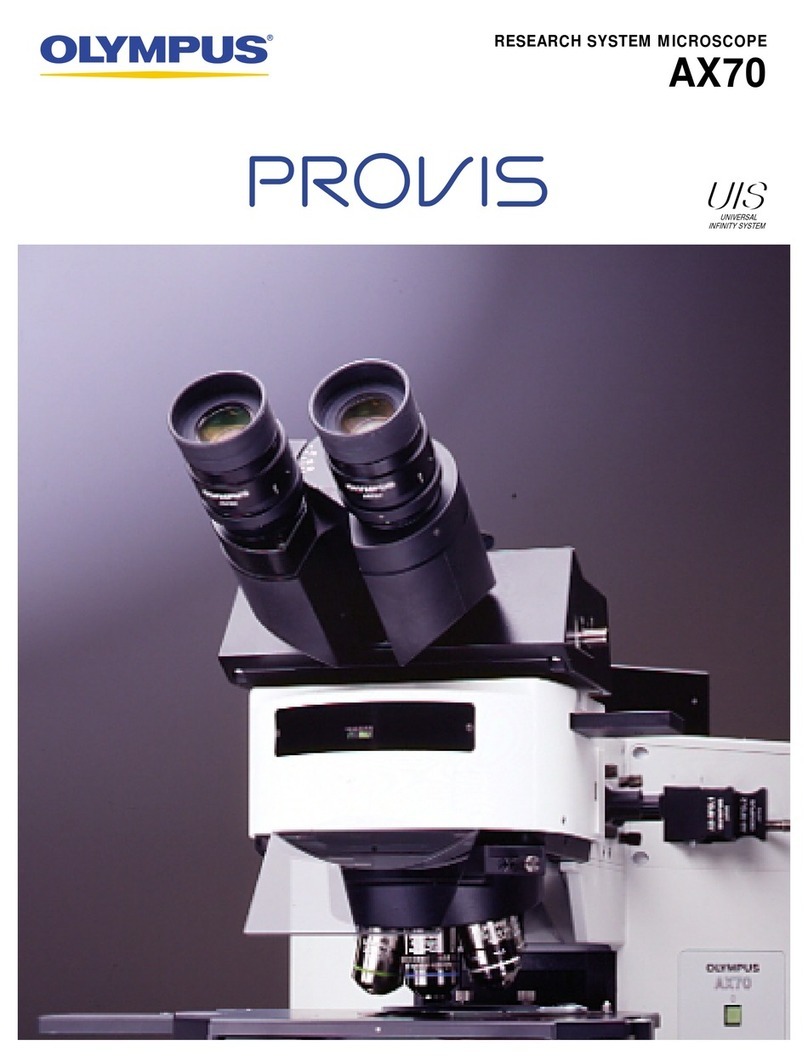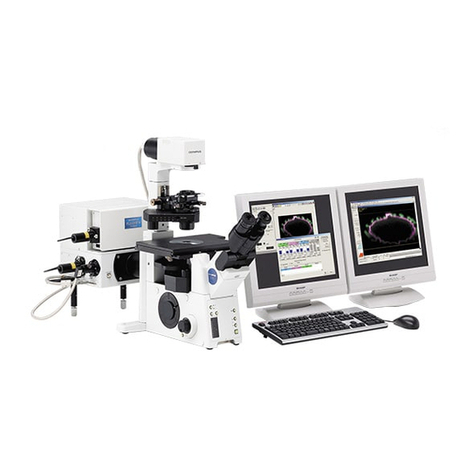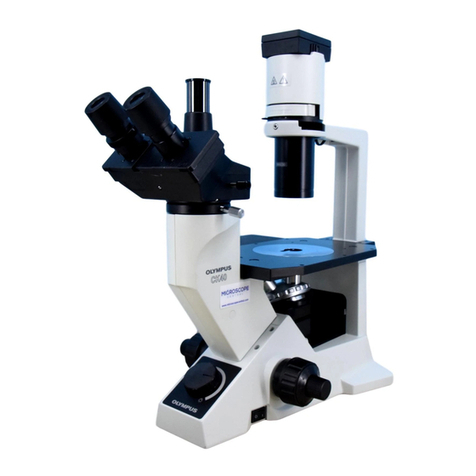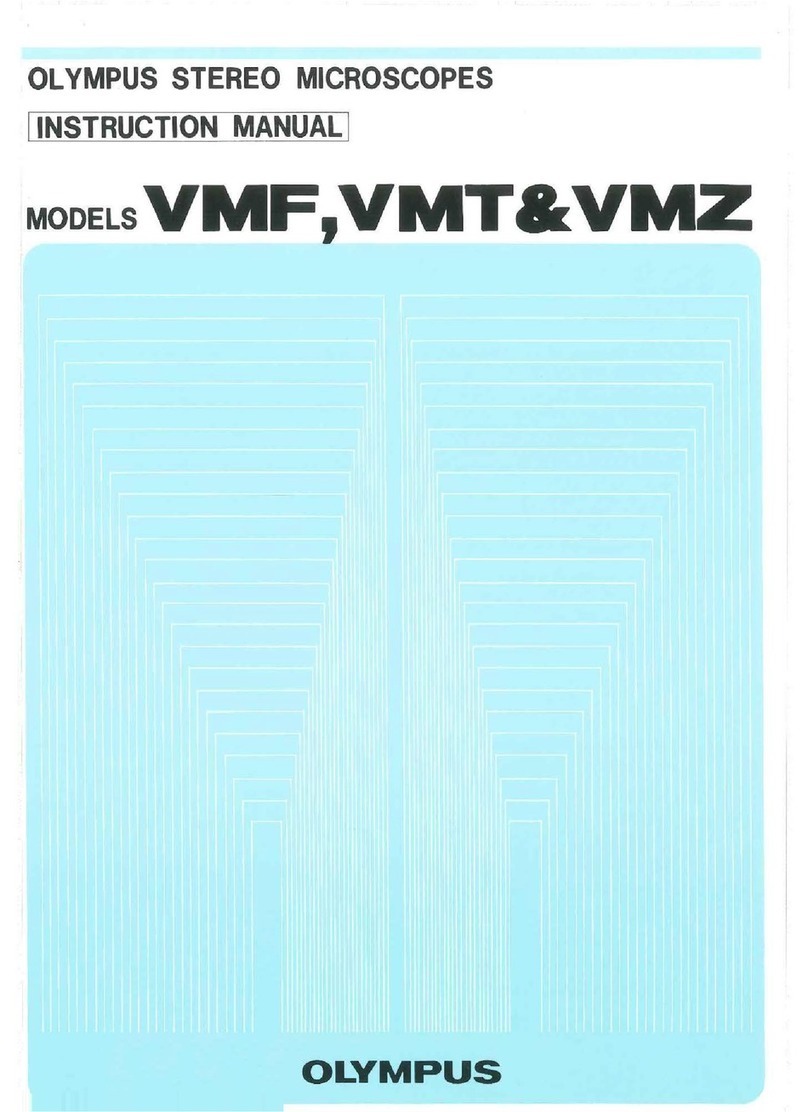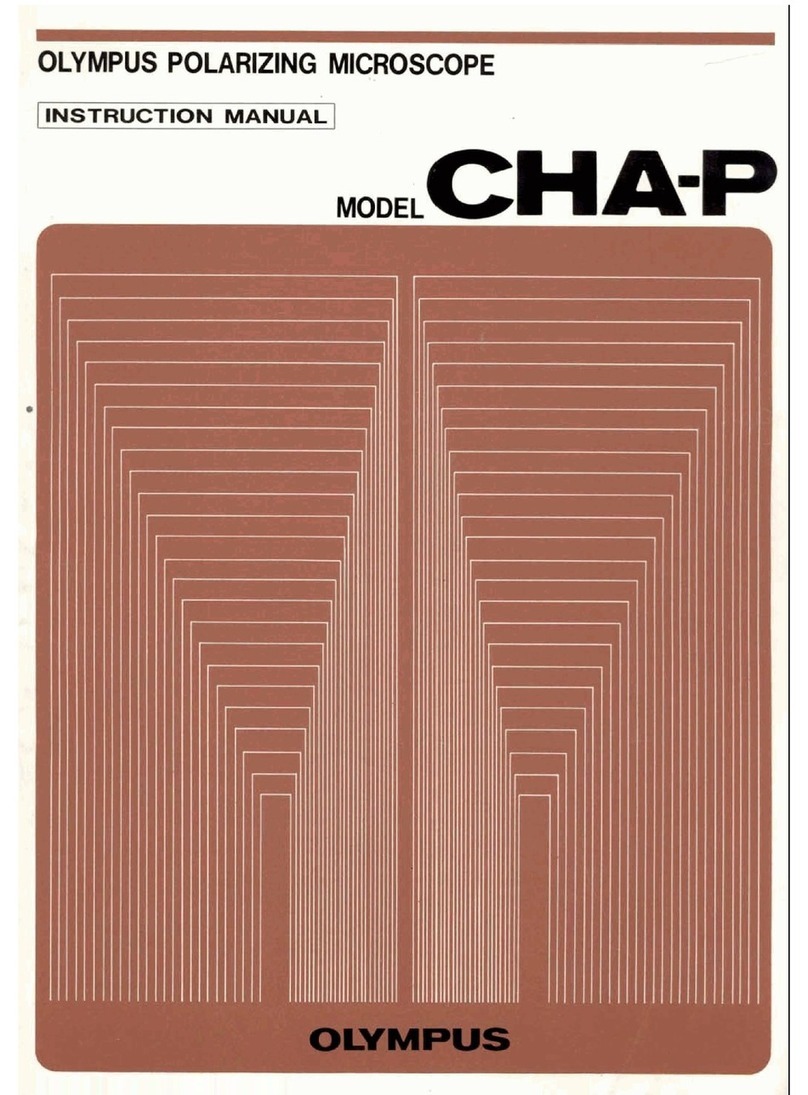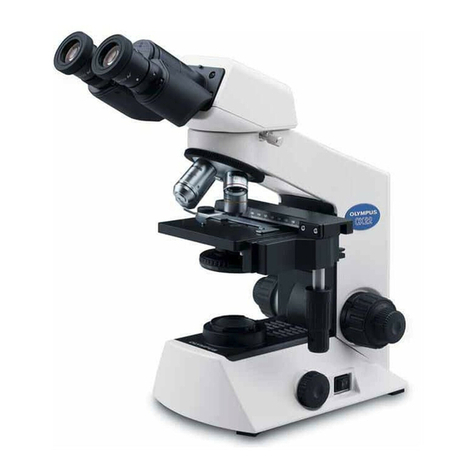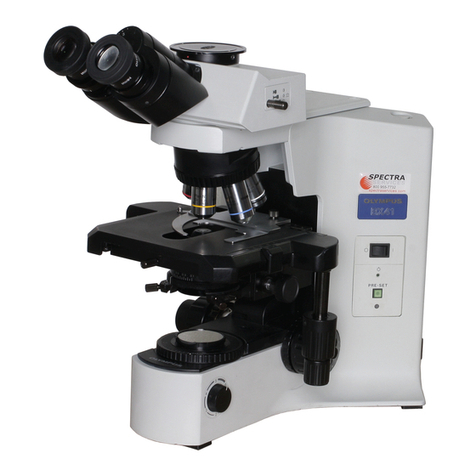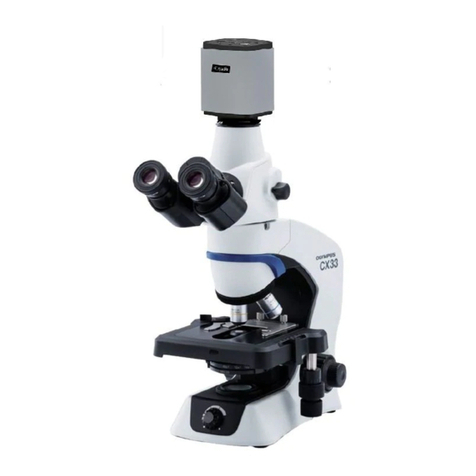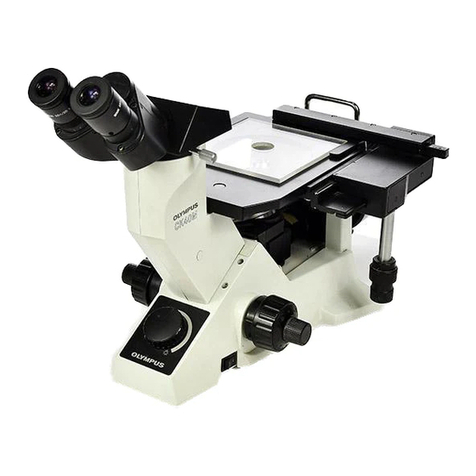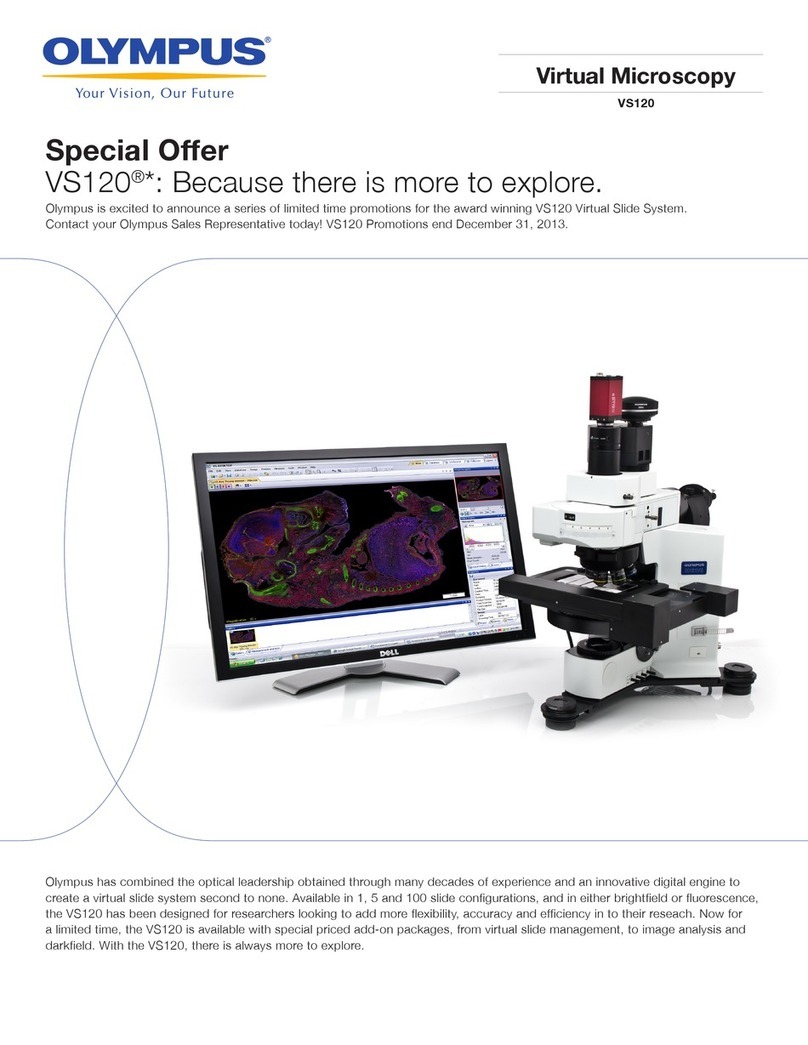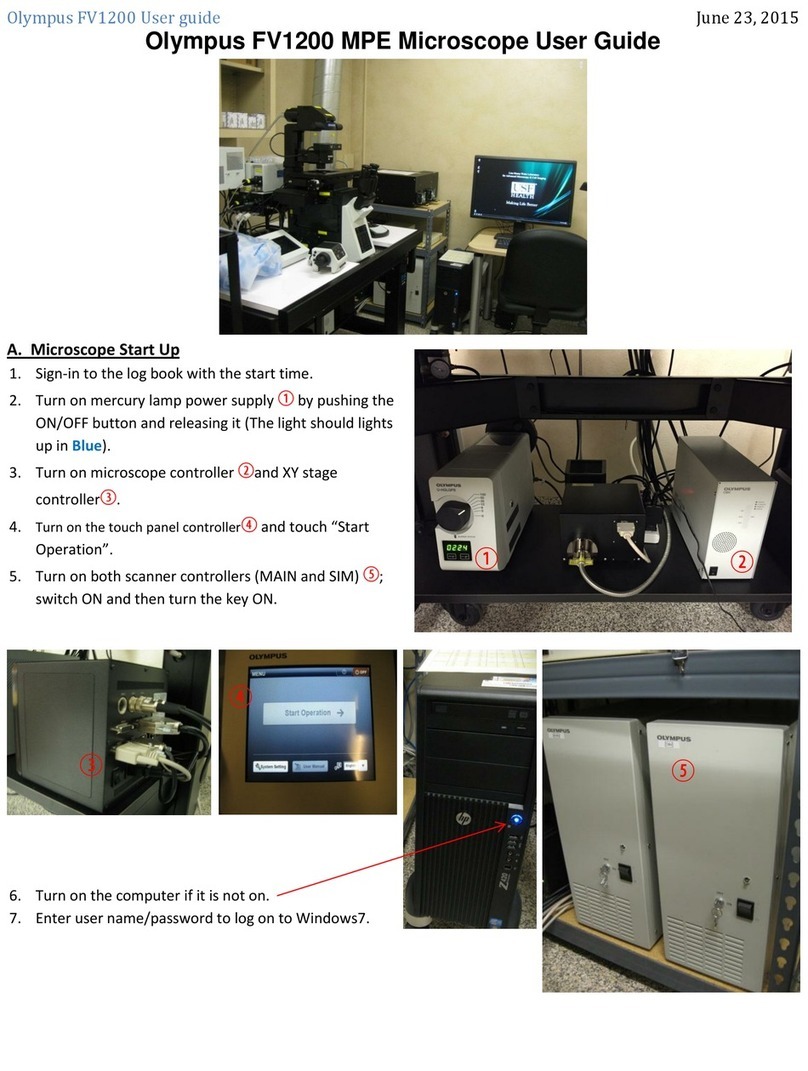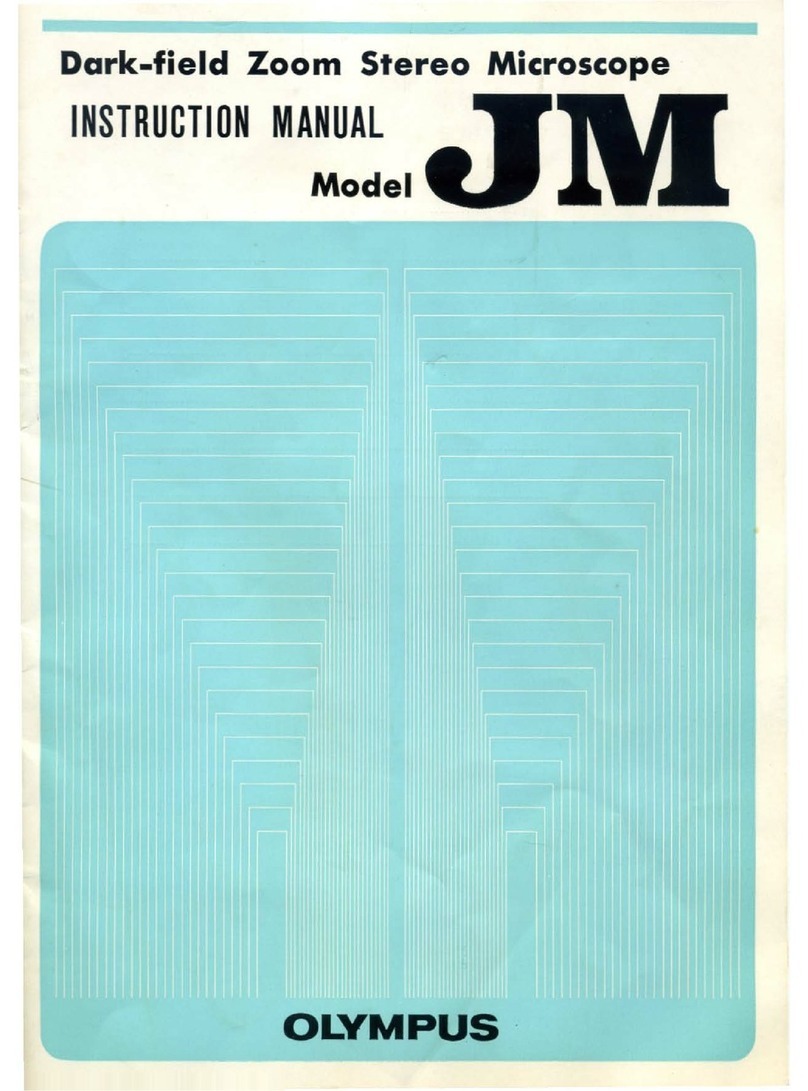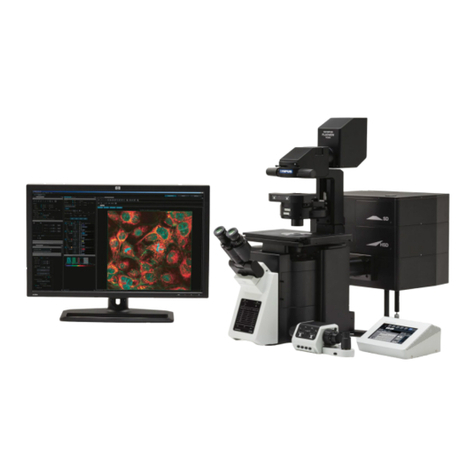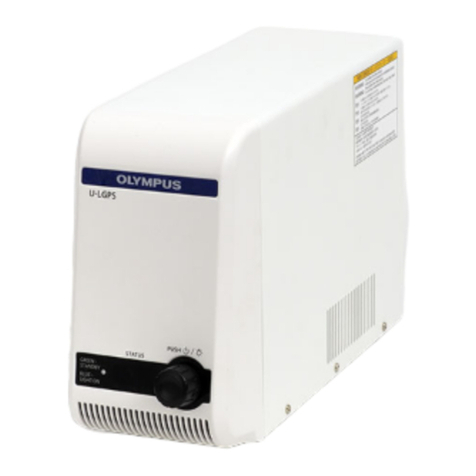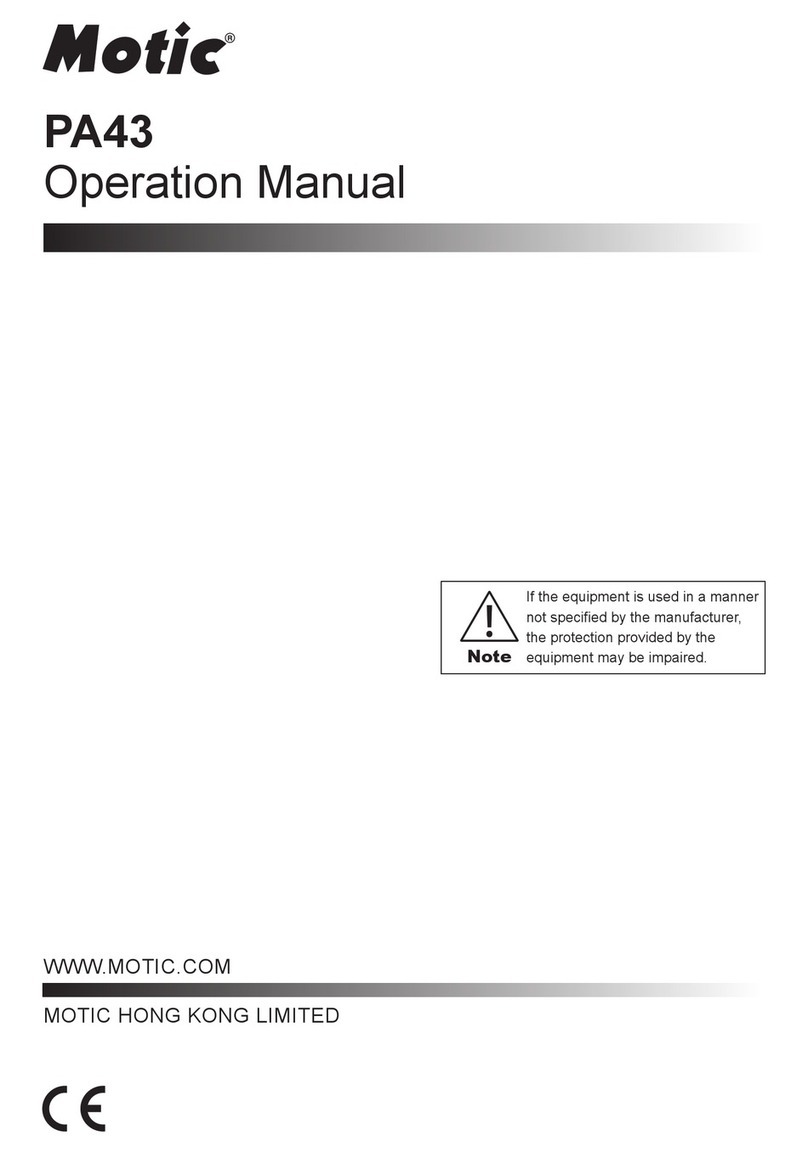
4
CAUTION - Lamp (halogen bulb and mercury burner) -
Remove the power cord from the product when replacing the
lamp.
To avoid electric shock hazards and burns when replacing the lamp, set
the main switch ato (OFF), and disconnect the power cord from the
product in advance. When you replace the lamp immediately after use of
the microscope, wait until the lamp housing and the lamp are sufficiently
cooled down.
Applicable lamp
[For U-LH100L-3]
12V100WHAL-L (made by PHILIPS Co. 7724I)
12V100WHAL (made by PHILIPS Co. 7023)
[For U-LH100HGAPO, U-LH100HG]
USH-103OL (made by Ushio Inc.)
Secure the sufficient space around the lamp housing.
The surface of the lamp housing on the back of the microscope gets
very hot. Therefore, when installing the microscope, secure the sufficient
space around the lamp housing (100 mm or more), particularly on the
top surface and bottom surface. After the microscope is installed, make
sure that the space below the lamp housing is sufficiently secured.
· As the UV ray of the mercury burner is harmful to your eyes, do not
light the mercury burner when the lamp housing is not attached to the
microscope.
· The lifetime of the illumination device is influenced significantly by
operating conditions (ambient temperature/humidity, voltage of the
power supply, lighting time, etc.), but is approximately eight(8) years
or 20,000 illumination hours if operating it 8 hours a day, whichever is
shorter, as a rough guideline.
· Since the lamp generates a high heat, perform the inspection
according to “11 Preventive inspection sheet for illumination devices"
on page 82. If you find the unexpected phenomena, e.g. smoke, etc.
during operation, turn OFF the power immediately and contact
Olympus.
a
Do not use the liquid light guide that is not conformed to this product.
You may get burned or your eyes may be damaged. For the liquid light guide that is conformed to this product, see
page 60.
Do not remove the liquid light guide when the lamp is turned ON.
The light emitted from U-LGPS may cause a fire. In addition, you may get burned or your eyes may be damaged.
Remove the liquid light guide after the liquid light guide and the LDP light source are fully cooled
down.
Otherwise, you may get burned.
CAUTION -
Liquid Light Guide -



